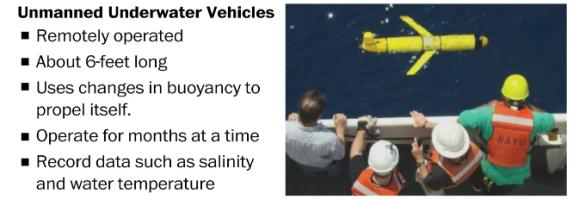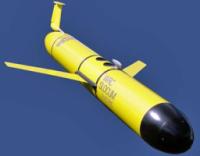 As we posted yesterday, a Chinese naval vessel seized one of USNS Bowditch’s drone gliders. Today there are news reports that the Chinese are giving it back. Unfortunately, in the interim, several news outlets either misinterpreted what transpired, or, at the very least, led with headlines which could be easily misunderstood.
As we posted yesterday, a Chinese naval vessel seized one of USNS Bowditch’s drone gliders. Today there are news reports that the Chinese are giving it back. Unfortunately, in the interim, several news outlets either misinterpreted what transpired, or, at the very least, led with headlines which could be easily misunderstood.
The BBC headline reads China ‘seizes US vessel’ in S China Sea directly above a photograph of the Bowditch. If you ignore the quotes in the headline, or even if you don’t, one might assume that the Bowditch was the vessel seized. Based solely on the headline and the photo it appeared to be a replay of the the USS Pueblo capture of 1968. Reading further into the article, it became clear that it was something quite different.
Mother Jones’ initial headline was also confused: “China Has Seized a U.S. Navy Vessel in the South China Sea.” This rather alarming headline has since been modified to China Has Seized a US Navy Underwater Drone in the South China Sea but not before the scarier “Seized a U.S. Navy Vessel” had spread all over social media.
Reuter’s tweeted : BREAKING: China’s navy has seized an unmanned, underwater U.S. Navy vehicle in international waters of South China Sea. The Washington Post used similar language in their headline: Pentagon: Chinese naval ship seized an unmanned U.S. underwater vehicle in South China Sea.
The Reuter’s tweet and the WaPo headline are technically accurate. The drone is referred to as a UUV, an unmanned underwater vehicle, or as an AUV, an autonomous underwater vehicle. The problem is that if you do not understand what the drone is, you might assume that the “unmanned, underwater U.S. Navy vehicle” was some high-tech or super-secret craft grabbed by the Chinese, rather than an inexpensive commercial research drone. To their credit the WaPo article does include a US Navy graphic with information about the drone, something not possible in a tweet. When Reuters later published a series of articles about the incident, they also used the word “drone” rather than the more vague “vehicle.”
 So, if the press reports were confusing, what exactly did the Chinese seize? Based on the Navy graphic, which appeared in the Washington Post and elsewhere, it appears that the Chinese grabbed a research drone called a “Slocum glider.” (Some news sources refer to the drone as a Seaglider, which is a similar device.) While we do not know what sensors the Navy may have packed into the drone, the Slocum glider itself is a commercially available research drone referred to variously as an autonomous underwater vehicle (AUV) or an unmanned underwater vehicle (UUV). The Slocum glider is shaped liked a torpedo with wings, except that it does not carry high explosives, is considerably smaller than a torpedo and, notably has no propeller. According to specifications from Rutgers the glider is 5’10” long and weights around 114 pounds.
So, if the press reports were confusing, what exactly did the Chinese seize? Based on the Navy graphic, which appeared in the Washington Post and elsewhere, it appears that the Chinese grabbed a research drone called a “Slocum glider.” (Some news sources refer to the drone as a Seaglider, which is a similar device.) While we do not know what sensors the Navy may have packed into the drone, the Slocum glider itself is a commercially available research drone referred to variously as an autonomous underwater vehicle (AUV) or an unmanned underwater vehicle (UUV). The Slocum glider is shaped liked a torpedo with wings, except that it does not carry high explosives, is considerably smaller than a torpedo and, notably has no propeller. According to specifications from Rutgers the glider is 5’10” long and weights around 114 pounds.

Photo: Teledyne
Instead of an electric motor, the Slocum gliders use what is called a buoyancy engine. The drone glides slowly from the surface to the bottom and back again using only changes in buoyancy and trim and the lift generated off the glider’s wings. As they rely only on gravity and buoyancy, they require only a small pump, operated either by battery or by changes in the water temperature, to pump water in or out of the drone to operate. They typically record ocean data — temperature, salinity, current, and so on, periodically surfacing to send the data back to the research center or ship by satellite uplink.
Glider drones are remarkably simple yet sophisticated devices, first developed by universities and oceanographic institutes. By military standards, they are also very inexpensive, costing around $150,000 each. By comparison the latest and greatest version of the US Navy Mark 48 torpedo is around $3.8 million a copy. And you can only use the torpedo once.
So, to recap, the Chinese didn’t really seize a US Navy vessel. They illegally seized a small commercially available research drone. And now they appear to be giving it back.
